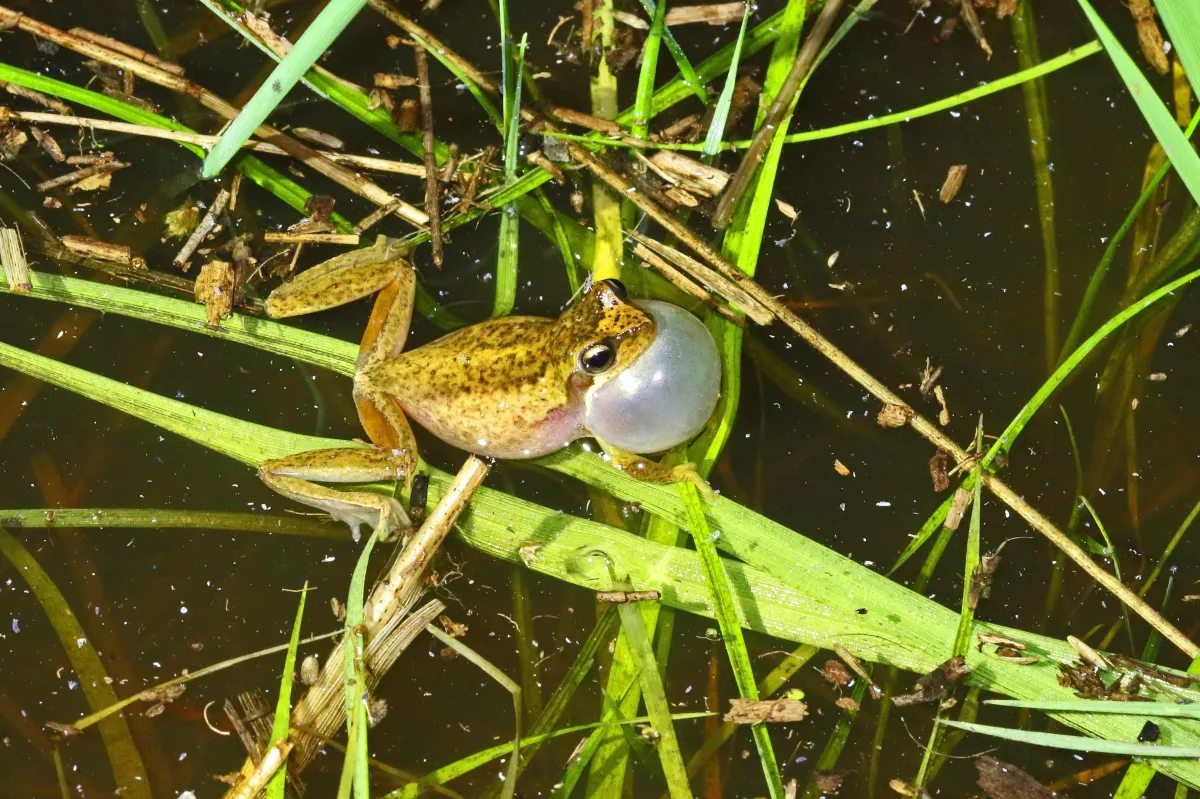Animals & Birds
Blackburn Lake Sanctuary is home to a range of animals, birds, insects, fish and reptiles.
For information about the animals and birds on this page and recent sightings download iNaturalist. For the birds listed below we also suggest Birdlife Australia's website.
Possums and Sugar Gliders
Both ringtail and brushtail possums live in the Sanctuary. When walking around the Sanctuary, you may see a ‘drey' – a mass of leaves and twigs in a tree – with a young ringtail possum looking out.
Krefft’s gliders (previously known as sugar gliders) also live in the Sanctuary and the adjoining streets.

Krefft’s gliders (previously known as sugar gliders) also live in the Sanctuary and the adjoining streets.

Birds
Blackburn Lake Sanctuary is one of the most important bird refuges in metropolitan Melbourne.
During the 1960s, approximately 180 different species of birds were recorded and documented by the Bird Observers Club in their publication, Birds of Blackburn Lake.
There has been a steady decline in the number and variety of birds since that time. This is due to a variety of factors, including loss of habitat, reduced food supply, fewer bird corridors linking bushland parks, the use of insecticides, roaming cats and dogs, foxes, polluted water, and of course, the human element.
Records of bird observations from 1975 are on display at the Visitor Centre.
Local school students and adult groups carry out bird surveys from time to time - including us at Blackburn Lake Sanctuary. See our What's On page for more information.
The most common birds seen at the Sanctuary:
• Australian magpie
• Bell miners
• Brown thornbill
• Chestnut teal
• Cormorant
• Eastern spinebill
• Eurasian coot
• Golden whistler
• Grebe
• Grey fantail
• Kookaburra
• Little raven
• Magpie lark (peewee)
• Musk lorikeet
• Noisy miner
• Pacific black duck
• Pardalote
• Pied currawong
• Rainbow lorikeet
• Red wattlebird
• Rosella
• Superb fairy wren
• Tawny frogmouth
• Welcome swallow
• White-faced heron
• White-plumed honeyeater
• Wood duck
Occasional visitors include:
• Black swan
• Pelican
• Spoonbill




Reptiles
Snakes
Two types of snakes may be seen at the Sanctuary:
• Eastern brown snake
• Lowland copperhead snake
Signs around the Sanctuary warn visitors to be on the lookout. The best advice if you see a snake is to walk back along the path or quietly walk forward, well clear of the snake. Usually, the snake will sense people coming and glide away.
Lizards
Occasionally a blue-tongued lizard or shingle-backed lizard may be seen.
Turtles
Two types of turtle may be seen in the lake:
• Common long-necked turtle
• Murray River turtle


Insects
There are many different types of insects around the Sanctuary, most of which have not been documented. All insects, particularly the ants, play an important role in the overall ecology of the bushland. They pollinate plants, chomp through dead wood and return the nutrients to the soil, remove the dung of animals living in the Sanctuary, and generally tidy up the place.


Fish
There are two types of introduced species living in the lake:
• Carp - an introduced species that has had a detrimental affect on the ecosystems of many of our waterways
• Gambusia or mosquito fish - they eat tadpoles, affecting our frog population
Fishing is not permitted at the Sanctuary due to its Land for Wildlife status and under Whitehorse Council Local Laws. Fishing damages lakeside vegetation, and lines and lures hook or entangle water birds. Recreational fishing is permitted locally at Ringwood Lake and Lilydale Lake.
Frogs
A number of types of frog call the Sanctuary home:
• Pobblebonk frog, or the Eastern banjo frog
• Eastern common froglet
• Striped marsh frog
• Southern brown tree frog

Email us:
[email protected]
Follow us:
The Blackburn Lake Sanctuary is a special place that sits at the origins of the Kooyong Koot tributary.
This Country, its creatures, lands, skies and waterways, has been continuously loved and cared for by the Wurundjeri peoples for over 60,000 years. We hope to walk with the Wurundjeri Woi Wurrung in caring for this place.
We acknowledge the Wurundjeri Woi Wurrung as the First Peoples of this area and pay our respects to their spirits, ancestors and elders.
